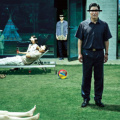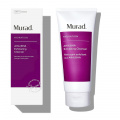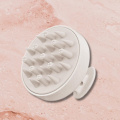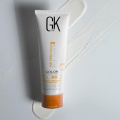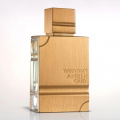How to Cut Split End? Expert Tips For Gorgeous Hair
Learn how to cut split ends like an expert and the right ways to say goodbye to them without sacrificing your hair's length while maintaining healthy tresses.
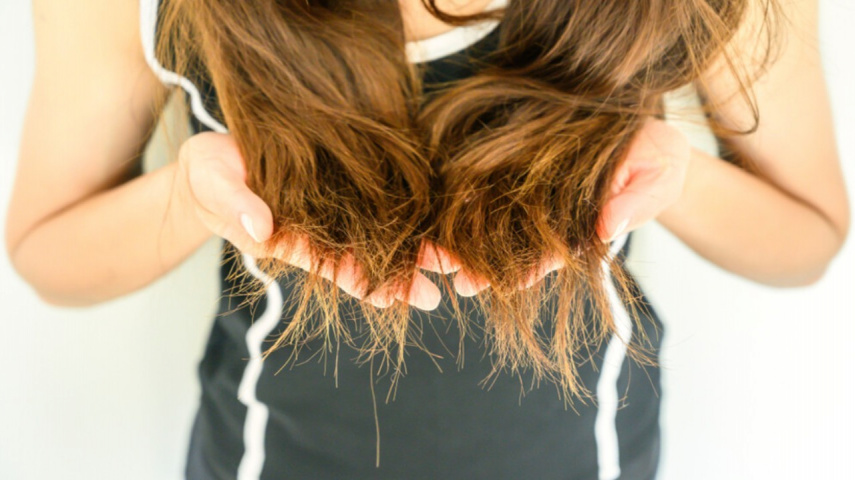
Wanting lustrous, long, and shiny hair is every girl’s dream and one way to achieve it is by getting rid of split ends as they not only affect the appearance of hair but also actively retard its growth. Therefore, let us understand how to cut split ends as well as preventative measures to be taken to ensure these do not bother you any further.
Split ends are common hair issues that occur due to dryness, chemical treatments, careless handling, etc. We will also discuss the reasons and types of split ends that are commonly observed. This will ensure better identification and thus effective treatment choices for your personal hair issues. Let us delve into the world of haircare to help you achieve gorgeous hair without frequent visits to the salon.
What Are Split Ends?
Split ends, scientifically known as "trichoptilosis," are a common hair condition in which the hair shaft splits or frays at the ends. This occurs when the protective outer layer of the hair, called the cuticle, is damaged or wears away, leaving the hair's inner cortex exposed. Split ends can make the hair appear dry, frizzy, and damaged, often resulting in a less healthy and well-groomed appearance. Hair with split ends is more prone to breakage, and if left untreated, the split ends can travel up the hair shaft, causing further damage. Trimming or cutting the split ends is typically the most effective way to manage this condition and maintain the overall health and appearance of the hair.
There are several causes that may lead to split ends, some of which are:
- Vigorously using shampoo throughout the ends of the hair while washing.
- Skipping the conditioner.
- Drying your hair by harshly rubbing it with a towel.
- Brushing your hair when it's still wet.
- Exposing your hair to harsh chemicals, such as chlorines found in swimming pools, ammonia found in bleaches, etc.
- Frequent use of high-temperature styling tools like blow dryers, hot combs, and curling irons.
- Tying your hair tightly in ponytails, buns, braids, or other updos.
- Utilizing hair extensions and weaves.
- Employing professional hair treatments such as perming, coloring, or relaxing.
- Excessive brushing of your hair.
There are many different types of split ends depending on their structure and causes. Here are different types of split ends:
- Basic Split End (Y-split): Also known as double split, this is the most common type of split end, characterized by a single strand of hair-splitting into two or more separate strands at the tip. Double splits can result from various factors that wear out or damage the hair follicle, including excessive heat styling, chemical treatments, frequent brushing, and inadequate hair care.
- Incomplete Split End (Partial Split): Incomplete splits involve only a portion of the hair strand splitting, leaving part of it intact and part of it split. Incomplete splits are not very serious and can develop from mechanical damage, such as aggressive combing or brushing, or from dryness of hair.
- Feather Split End (Multiple Splits): Feather splits involve a single strand of hair-splitting into multiple smaller strands at the end, resembling the barbs of a feather. Overexposure to heat, excessive hair coloring or perming, and neglecting to trim your hair regularly can lead to feather splits.
- Forked Split End: Forked splits occur when a single hair strand splits into three, just like a fork. Forked splits often develop from repeated use of hot styling tools, harsh brushing, and a lack of moisture and conditioning.
- Tree Root Split End (Split Near the Scalp): Tree root splits occur closer to the scalp or hair root and may involve the splitting of a hair strand into two or more separate strands near the root. These splits can be a result of excessive tension on the hair, such as tight hairstyles or hair extensions, and chemical damage.
- Knot Split End (Looped Split): Knot splits appear as small, twisted loops or knots at the end of a hair strand. Knot splits can form due to friction and tangling, especially in long hair, and they may be worsened by rough handling during detangling.
How to Cut Your Split Ends by Yourself?
Cutting your split ends yourself is possible with the right technique and tools. Here's a simple guide to help you do it right at the convenience of your home:
Tools:
- Sharp hair-cutting scissors or shears
- A fine-tooth comb
- Hair clips or ties to section your hair
- Good lighting
Instructions:
- Preparation:
- Start with clean and dry hair.
- Make sure you are in a well-lit area where you can clearly see your split ends.
- Section Your Hair and Identify:
- Divide your hair into small, manageable sections using hair clips or ties. This will make it easier to focus on one section at a time.
- Take one section of hair and comb it thoroughly to remove any tangles.
- Hold the hair strand between your fingers and carefully inspect it for split ends. They usually appear as small, frayed strands sticking out from the main hair.
- Trimming:
- Using your sharp hair-cutting scissors, carefully snip the split ends off, making sure not to cut too much length from your hair. Aim to trim just above the split point.
- Be precise and avoid cutting too close to your healthy hair, as this can create new split ends.
- Repeat this process section by section until you have trimmed all the split ends from your hair.
- After you've finished trimming, comb through your hair again to ensure you haven't missed any split ends.
- Styling (optional): Style your hair as desired, and you'll notice that it looks healthier and more polished without the damaged ends.
Remember, it's essential to use proper hair-cutting scissors because dull or regular scissors can cause more damage to your hair. If you're uncomfortable doing this yourself, consider seeking the help of a professional hairstylist.
5 Methods for Managing and Eliminating Split Ends:
There are many different ways one can treat or manage split ends at home. Some of these measure are as follows:
1. Hot Coconut Oil Rub:
Coconut oil is known to add moisturization and nourishment to dry and dehydrated hair follicles due to its rich in fatty acids content, particularly lauric acid, which helps in relieving weak and partially split ends. Coconut oil forms a protective barrier around the hair, reducing the loss of hair proteins called keratin, thus preventing hair damage, including split ends (1).
- Materials:
- ¼ cup coconut oil
- Hair trimming scissors
- Instructions:
- Start with thoroughly shampooed and towel-dried hair. Natural oils can be heavy, so it's essential to begin with clean, dry hair.
- Take a small amount of coconut oil and work it into your hair, focusing on the ends to mid-shaft.
- Avoid applying the oil to your hair's roots.
- Clip your hair up, wrap it in a towel or plastic wrap, and wait for 30 minutes.
- After 30 minutes, rinse your hair thoroughly to avoid any oil buildup.
- Repeat this treatment once every two weeks.
2. Avocado Protein Mask:
An avocado mask can help relieve split ends through its rich nutrient content and moisturizing properties. It is packed with natural oils and fats, including vitamins E and K which provide deep hydration to your hair. The fatty acids in avocado can help repair damaged hair by fortifying the hair shaft and reducing the appearance of split ends. This can lead to stronger and healthier hair overall (2). Therefore, to create a deeply hydrating and revitalizing avocado protein mask follow the below guide:
- Ingredients
- One avocado
- One egg
- A few drops of olive oil.
- Instructions:
- Mash up the avocado and mix it with the egg.
- Add olive oil until the mixture has a consistency slightly thicker than a conditioner.
- Apply the mask to the ends of your hair.
- Leave it on for 10 to 20 minutes.
- Rinse the mask out of your hair with warm water.
3. Leave-In Conditioner:
Leave-in conditioners are specially prepared to help relieve split ends by providing essential moisture and nutrients to your hair, improving its overall health and appearance.
- Materials:
- Choose a leave-in conditioner designed for damaged and dry hair.
- Instructions:
- Wash and towel dry your freshly washed hair or use a spray bottle to dampen it.
- Follow the product's instructions and apply the leave-in conditioner thoroughly throughout your hair.
- Leave it for the instructed time and rinse your hair gently.
- Proceed with your regular hairstyling routine.
4. Fish Oil Soak:
Fish oil, rich in omega-3 fatty acids, can indirectly help improve the overall health of your hair and reduce the likelihood of split ends. Omega-3 fatty acids in fish oil help maintain a well-hydrated scalp which in turn is essential for preventing dry and brittle hair. It further improves the flexibility and elasticity of hair strands, making them less susceptible to damage and breakage, which can contribute to split ends (3). Therefore, to use fish oil for better hair health and growth, you may follow the below-mentioned guide:
- Materials
- Two fish oil capsules
- One tablespoon of coconut oil
- One tablespoon of lavender
- Instructions:
- Combine all the ingredients in a saucepan.
- Heat the mixture on low for five minutes.
- Pour the mixture into a large bowl.
- Dip your hair ends into the bowl and work the mixture up your hair, avoiding the roots.
- Wrap your hair in a towel or plastic wrap.
- Allow your hair to soak for 40 minutes.
- After the soak, wash the mixture out of your hair thoroughly.
5. Tie Your Hair in A Bun or an Updo:
Keeping your hair in a bun or tied up will protect it from environmental damage as it is less exposed to stressors. It not only protects but also prevents excessive moisture loss from the hair shaft which prevents further damage and thus preventing them from split ends. You may do so by:
- Materials:
- Wide-toothed combs
- Hair clips
- Rubber bands
- Scarves(optional)
- Choose a style: Opt for an updo or bun hairstyle that conceals your split ends effectively. This can include top knots, braids, or any updo that keeps your hair ends tucked away.
- Instructions:
- Collect your hair into the chosen updo style, making sure the ends are neatly tucked away.
- Use accessories like scarves, barrettes, or hats to enhance your hairstyle and keep your split ends hidden.
- Wear an appropriate outfit to go with your stylish hairdo.
How to Prevent Getting Split Ends?
Preventing split ends involves adopting good hair care practices and minimizing activities that can cause damage to your hair. Here are some tips to help you prevent split ends:
- Regular Trimming: Get regular haircuts or trims to remove existing split ends. This is essential for maintaining healthy hair and preventing split ends from traveling up the hair shaft.
- Use Proper Hair-Cutting Tools: Ensure your hair-cutting scissors are sharp and designed for cutting hair. Dull scissors can cause more damage.
- Avoid Overwashing: Washing your hair too frequently can strip it of natural oils, making it more prone to damage. Try to wash your hair every 2-3 days or as needed.
- Use a Mild Shampoo and Conditioner: Choose a gentle, sulfate-free shampoo and a moisturizing conditioner. Avoid products with harsh chemicals that can weaken your hair.
- Condition Regularly: Use conditioner after shampooing to add moisture and improve hair elasticity. Concentrate on the ends of your hair where split ends are most likely to occur.
- Limit Heat Styling: Reduce the use of heated styling tools like hairdryers, curling irons, and straighteners. If you must use them, use a heat protectant spray and lower heat settings.
- Avoid Tight Hairstyles: Avoid styles that put stress on your hair, such as tight ponytails, braids, or buns. Use hair ties that are gentle on your hair.
- Protect Your Hair from the Sun: UV rays can damage your hair, so wear a hat or use hair products with UV protection when spending time in the sun.
- Use a Wide-Toothed Comb: After washing, use a wide-toothed comb to detangle your hair gently. Start from the end and work your way up to prevent breakage.
- Be Gentle When Towel Drying: Avoid rubbing your hair vigorously with a towel. Instead, pat it dry gently or use a microfiber towel to reduce friction.
- Limit Chemical Treatments: Minimize the use of harsh chemical treatments like perming, coloring, or relaxing, as these can weaken your hair.
- Moisturize Your Hair: Use hair masks or deep conditioning treatments regularly to keep your hair well-hydrated.
- Eat a Balanced Diet: Proper nutrition is essential for healthy hair. Consume foods rich in vitamins, minerals, and protein to support hair health.
- Stay Hydrated: Drink plenty of water to keep your body and hair hydrated from the inside out.
- Sleep on Silk or Satin Pillowcases: These materials create less friction against your hair, reducing the risk of breakage and split ends.
Tips For Cutting Split Ends on Straight Hair

There are three major different ways one can cut split ends on straight hair which are:
1. Hair Twisting Method: Hair twisting is a traditional approach for snipping split ends and is, in fact, the technique employed by professional hairdressers.
Tools:
Procedure:
- Start with dry hair.
- Take a 1-inch section of hair and tightly twist it clockwise from the roots to the tips. Keep the twisted section taut at the ends.
- If you've twisted the hair tightly enough, you'll notice split ends protruding from the twisted section.
- Beginning at the top of the section and working your way down, trim off these protruding split ends.
- Next, re-twist the same section, but this time in a counterclockwise direction, and trim off the split ends in the same manner.
- Repeat this process for your entire hair.
2. Hair Sliding Method: Hair sliding is a less conventional method that not many are familiar with. This approach requires a bit more effort as it involves straightening the hair before trimming split ends.
Tools:
- Wide-toothed comb
- Hair trimming scissors
Procedure:
- Use a wide-toothed comb to detangle your hair.
- Take a 1-inch section of hair.
- Begin at the roots, weaving this hair section under your index finger, over your middle finger, and under your ring finger. Your hair should be visible only above your middle finger.
- This weaving action will expose the split ends above your middle finger.
- Trim these split ends with hair-trimming scissors.
- With the hair still woven through your fingers, slowly slide your fingers down the section while trimming off the split ends in the same manner.
- Repeat this sliding and trimming process until you reach the end of the section, then continue this method for your entire hair.
3. Trimming The Ends: If you're short on time or patience, you can simply trim the ends of your hair to remove split ends.
Tools:
- Hairbrush or wide-toothed comb
- Hair trimming scissors
Procedure:
- Begin with damp hair, either immediately after a shower or by dampening your hair with a spray bottle.
- Brush out any knots and tangles from your hair.
- Pick up a 1-inch section of hair, and you can clip up the rest to keep it out of the way.
- Hold this hair section between your index and middle fingers at the roots.
- With the hair taut between your fingers, slide your fingers down until you're about an inch away from the ends, holding the section in front of you.
- Keeping the scissors perpendicular to the hair, carefully trim 1-2 inches from your hair.
- Trim the ends of all your hair using this same method.
Tips For Cutting Split Ends on Curly Hair

You can use the above methods on curly hair as well. The first method which is the Hair twisting method, can be used for curly hair without any necessary changes to the procedure. However, the last two methods, namely, the Hair sliding method and the Trimming the ends method will require a few additional steps in the case of curly hair. Apply a heat protectant and straighten your hair and only then continue with the rest of the steps for better results.
Conclusion:
In our article on how to cut split ends, we attempted to throw some light on a very common hair issue - Split ends. Split ends can be easily prevented with certain careful measures such as using microfiber hair towels, using silk pillowcases, shampooing gently, etc. However, do not worry if you have noticed a few split ends on your hair because it can be resolved. There are many ways to get rid of these issues, including trimming, hair care masks, and minimizing hair styling. So, your days of flaunting luxurious tresses are just a few steps away!
ALSO READ: A Quick Guide to Fighting And Preventing Hair Loss On Temples





 JOIN OUR WHATSAPP CHANNEL
JOIN OUR WHATSAPP CHANNEL



































